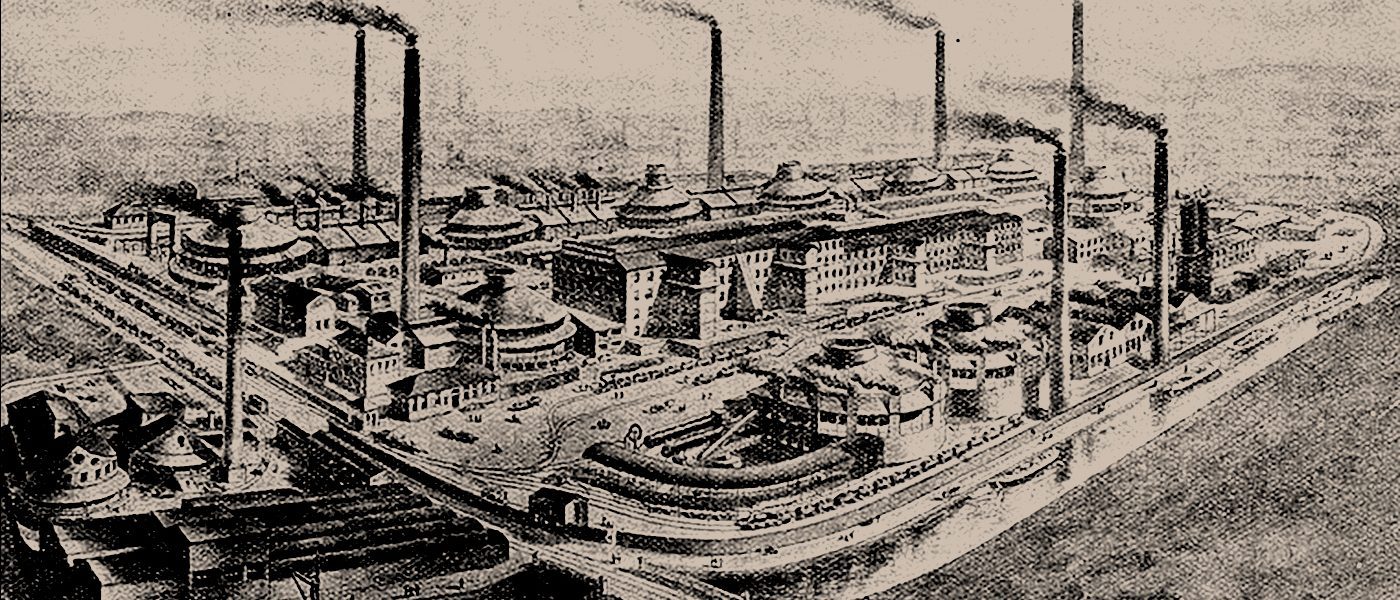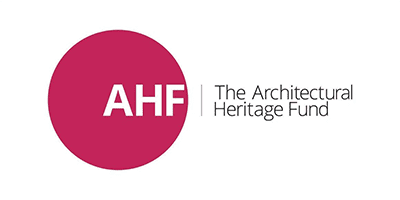Hot since 1886. The No.7 Bottle Shop produced bottles by the thousand as an innovative world first. It put St Helens firmly in the middle of the global glass making map.

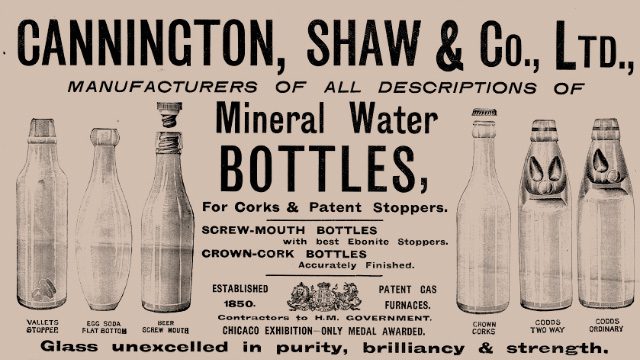
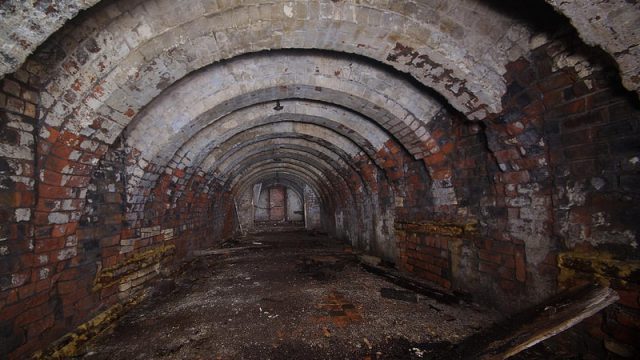
HOW THE NO: 7 BOTTLE SHOP BECAME PART OF WORLD HISTORY
John Shaw, together with brothers, John and Edwin Cannington, built the revolutionary bottle shop in 1886 to Siemens design, making it one of the first in the world to successfully run 24/7. Over the course of its life several innovations were made, including the introduction of Astley semi-automatic glass bottle making machines. In 1918 it ceased to be an active furnace and the tank was removed, which heralded its new role as a company stores. In World War Two it was pressed into service as an air raid shelter, thanks to its cavernous basement. By the late 1970’s it had fallen into ill repair, and after the 1982 demolitions of the greater Sherdley site, No. 7 became the only remaining part of what was once the largest glass bottle production site in the world.
A FASCINATING TIME CAPSULE TO PRESERVE AND EXPLORE
Whilst the furnace tank is long gone, much remains. The oval architectural cone, a hangover feature of earlier crucible furnace batch production still towers over the structure. Beneath the building the flue tunnels, which reversed air through the generators, are still intact too, making for a fascinating glimpse into the past. Not for nothing does Historic England list No: 7 Bottle Shop as “possibly the most intact example of a late 19th Century Bottle Shop, anywhere in the world.”
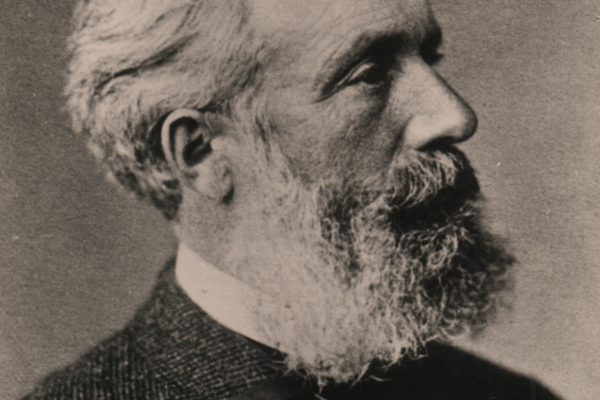
1856
THE MAN BEHIND THE COMBUSTION REVOLUTION – FRIEDRCH SIEMENS
The regenerative furnace was invented by Friedrich Siemens while he was studying heat technology. He applied the engineering principles of Robert Sterling’s regenerator to industrial furnaces and took out an English patent in 1856. The idea was a roaring success. It dramatically transformed efficiencies by utilising waste combustion gases to preheat a regenerator, through which gas and air passed to enter the tank furnace. This trailblazing idea reinvented steelmaking and all of what we now know as the Foundation Industries, including of course, glass. Along with his Brother, William, he would go on to work with Chance Brothers in Bristol in the early 1860s, testing and refining the methodologies, applying his invention to crucible pot day furnace operations and developing his ideas for tank furnace operations.
Having worked out many of the practical issues in England, by 1867 he was back in Dresden, working at his late Brother, Hans Siemens glass making plant. Here for the first time he successfully applied his regenerator technology to a tank furnace; however, he encountered numerous structural issues with the furnace crown and other technical problems.
Throughout the 1870s, Friedrich formed several cooperative partnerships, including Cannington Shaw and Pilkington Brothers. A visit to the Dresden site in the earlier 1870s was crucial to Pilkington developing the regenerator furnace technology for flat glass, culminating in the Pilkington No: 9 Jubilee Cone opening in 1887, a year after Cannington Shaw No: 7 Bottle Shop.
Friedrich passed away in Dresden in 1904, leaving an incredible legacy that lives on today in our modern day glass manufacturing plants, where the furnaces still use the regenerator technology invented by him.
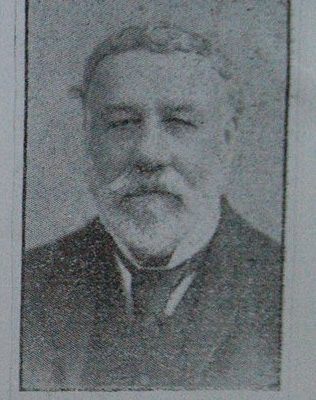
1864
THE GLASS MAN
In 1857 John Shaw arrived in St Helens and by 1864 was setting up his first glass works at Marsh’s Cross, Watson St. The image shows the area as it is now and John Shaw later in life around 1900. By 1866 he had sold the business to Pilkington Brothers.
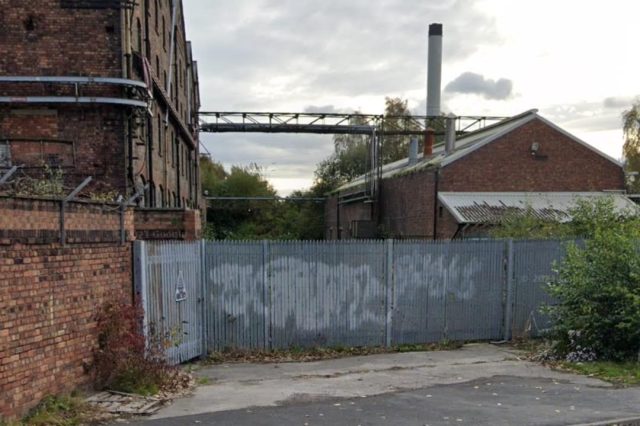
Hailing from Yorkshire, John was the son of Wheelwright, but had chosen to go into the glass bottle industry and learned his trade from the bottom up. By the time of his arrival in St Helens he was an accomplished glass maker, but still only 24 years old. His technological know-how would be key to the success of his future partnership with the Canningtons.
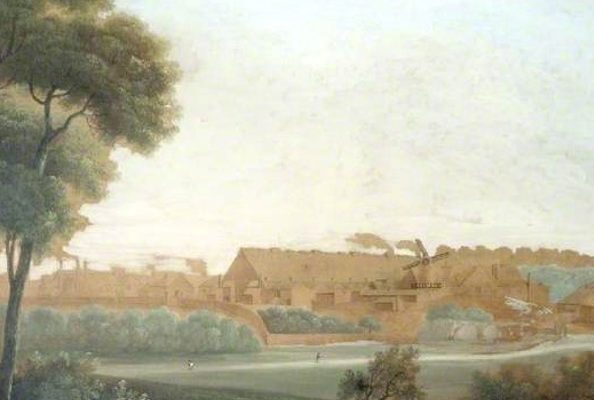
1866
THE ENTREPRENEURS
When brothers John & Edwin Cannington met master glass maker, John Shaw, the world was about to change. They would go on to create the largest glass bottle manufacturing plant in the world by the turn of the last century; however, that would be some twenty or so years in the future.
John and Edwin were no strangers to the industry, indeed they were very much of Glass making royalty. Hailing from a family of prominent industrialists, based in Bristol, their extended family owned various glass making firms around the country and it is in these that they were schooled in the business management and acumen required to become prominent industrial entrepreneurs. By the time they met John, they had already opened a Glassworks on Vauxhall Rd in Liverpool.
Their first combined venture would be Ravenhead Glassworks, purchased as an ongoing concern which they would develop over the coming years. The image on the left is a painting of the Glassworks dated to around 1850.
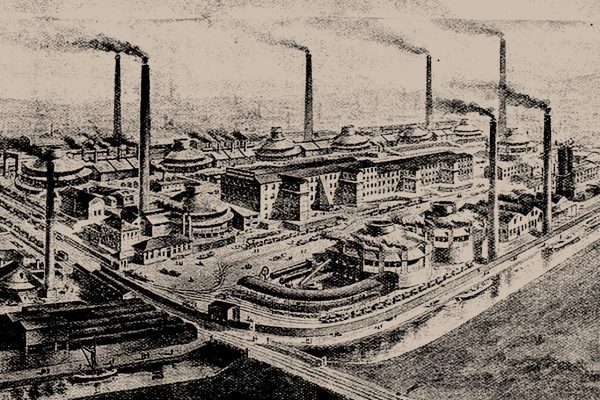
1873
With the business at Ravenhead doing well, the Cannington Shaw partnership moved to secure their second manufacturing site in the town. Not much information remains of the Sherdley Tobias Royle Flint Glass Works, but it appears to have been a failing business and no doubt was secured at a good price.
They invested in their new acquisition and expanded the works, building bottle shops to the Siemens design under the expert guidance of John Shaw. The illustration on the right shows the new Sherdley works as they would have been at the end of the 19th Century, at his zenith as the biggest glass bottle manufacturing site in the ‘world’ – certainly the UK!
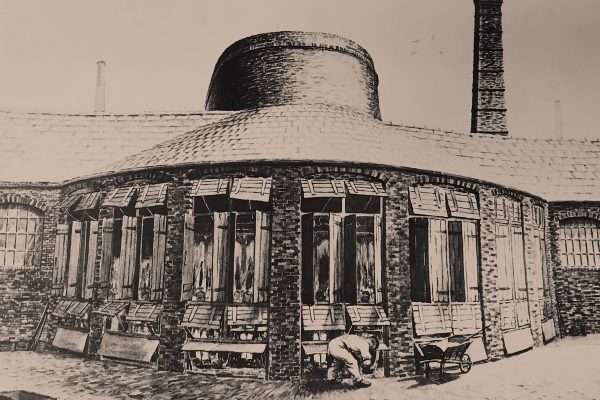
1886
THE GAME CHANGER – No: 7 Bottle Shop & continuous production
Little information remains regarding the operation of the factory at Sherdley from these times and certainly little was recorded on paper of innovative improvements, lest the opposition managed to get hold of them; however it seems certain that No: 7 Bottle Shop was something of a step change for the company and it seem 24/7 production became the norm. Improvements to the design and other innovations pushed the company forward ahead of its competition.
It is important to realise that the No: 7 Bottle Shop was not simply a building that once housed a furnace, the Bottle Shop was a glass making engine itself. It employed the principle of directing hot waste gases through a checker brick regenerator, which was beneath the furnace tank, part of the buildings superstructure. Four tunnels lay two each side of the central maintenance tunnel, running along its length in parallel. These four had small connecting vents to the furnace above, through which air and producer gas would flow.
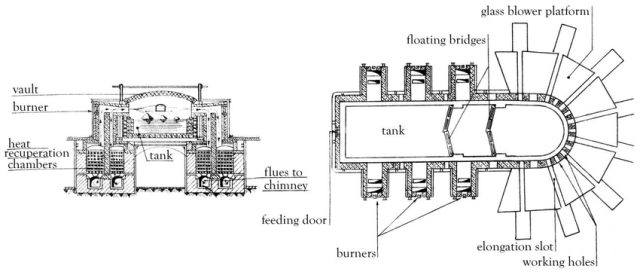
The furnace tank above them would use the gas and air as combustion fuel, providing heat to melt the raw materials into molten glass. The spent gas and air generate waste exhaust gases, which would be channeled out of the tank furnace through the opposite side tunnels. The tunnels were filled with refractory bricks arranged in a lattice design, on an opposing arrangement, these were the regenerators. This arrangement allowed for gaps between each of the bricks, through which the exhausting gases could flow. The bricks extracted the heat from the waste gas via thermal convection. This process warmed up the regenerator checker bricks to a high temperature, which was done over a 20-minute cycle. After 20 minutes the process would be reversed and fresh gas and air introduced. The gas channeled through one and air through the other. As they flowed through the regenerators to the furnace, a heat exchange process again took place where the heat was transferred to the gas and air again via thermal convection.
The heated gas and air would then enter the tank furnace at a high temperature, providing for a much more efficient ignition point, reducing fuel consumption and achieving higher furnace temperatures, therefore obtaining far greater profitability for the glass maker.
Over the course of its 32 year life as an operational furnace, the No: 7 bottle Shop would see many innovations. Whilst today we see furnaces constructed with 10 to 15 year life spans in mind. In the late 19th and early 20th centuries, most of the melting tanks in bottle shops, would be rebuilt annually. These yearly rebuilds would see new materials and construction methodologies employed, experimentation by glass technologists like John Shaw would yield ever greater improvements to the original designs. No: 7 would also witness the introduction of semi-automatic bottle making machines.
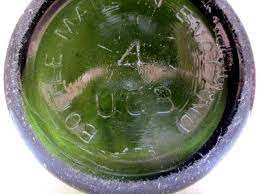
1913
NEW COMPANY & NEW TECHNOLOGY – UNITED GLASS BOTTLES
Cannington Shaw amalgamate with other bottle makers to form UGB (United Glass Bottles) in order to pool financial resources to buy the new Owens Machine technology from America. The Owens was the first fully automatic glass bottle making machine in the world. It was never used in No: 7 Bottle Shop or any Bottle Shop of the style, it was built for use with larger furnaces and greater space than a Victorian Bottle Shop could offer.
The Cannington Shaw name would remain as one of the trading partners of the freshly formed company into the 1930s.

1918
As the First World War concluded, so did the life of No: 7 Bottle Shop as a production furnace. Technological advancements provided the means to build bigger and more efficient furnaces and the bottle shop concept with its iconic oval cone, fell into history. As its designation suggests, No: 7 had earlier siblings and a couple of later ones. The earlier designs of 1 through to 6 shops were removed and a later 8 and 9 lost to time by demolition.
The expeditious and fortunate turn of events for posterity, which saw No: 7 become a factory stores rather than face the bulldozer, was in all probability brought about by the bottle shops position in the Sherdley works. No: 7 would have been difficult to remove at the time as it had been enclosed as the Sherdley Factory developed and grew around it. Its less fortunate siblings were on the periphery.
So began it’s long career as Factory Stores, Locker Room and Showers, which would last until the late 1970s.
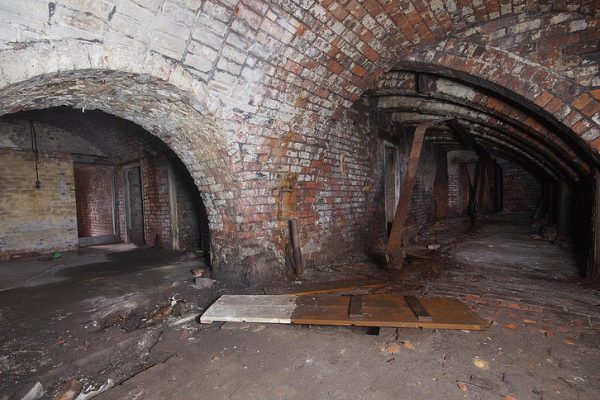
1939
ON ACTIVE SERVICE
With the outbreak of World War Two, No: 7 was called upon to do its duty and thanks to its cavernous basement areas, served the local community as an Air Raid Shelter.
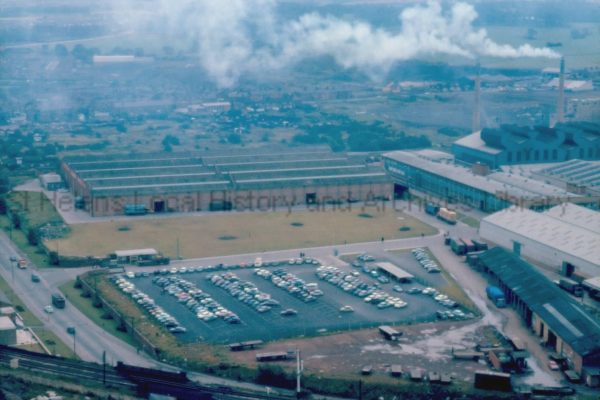
1966
A NEW ERA
The year heralded the dropping of the ‘B’ from UGB and the company becoming UG – United Glass.
The opening of United Glass Peasley in 1966, heralded a new era of glass making. The site was state of the art and the most modern in Europe. In comparison to Sherdley, which was just to the right of the photo, it was like comparing the Starship Enterprise with HMS Victory.
Whilst the writing was on the wall, the Sherdley factory and the No: 7 Bottle Shop was to continue for another 14 years, before finally succumbing to closure as the last furnace was extinguished on a site that had been producing glass for more than a century.
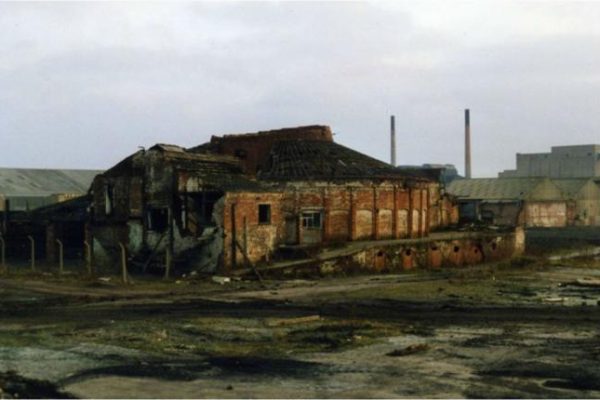
1982
WILDERNESS YEARS
Following the demolition of the Sherdley Works in 1982, No.7 would see itself isolated and almost forgotten. Once more fate was to step in and the bottle shop escaped the attentions of the bulldozer, thanks to its listing as a scheduled monument and grade 2 listed building; however, this did it no immediate favours. Being the only remnant of what was once the largest glass bottle manufacturing site in the world, No. 7 was to face the next 4 decades very much alone and unloved.
The landscape around it was to change dramatically in forty years, with the Peasley United Glass (formerly Cannington Shaw) factory closing in the mid 1990s, the site was finally acquired and developed by Network Space. This lead to the opening of the new St Helens RLFC Stadium and a Tesco adjacent to the bottle shop.
Despite its reprieve from the demolition ball, Cannington Shaw No: 7 Bottle Shop did not fare well from these developments, finding itself fenced off and increasingly forgotten in a pocket of land to the north of the site. Hemmed in in on all sides by a Tesco car park and the St Helens Linkway, there didn’t appear to be much interest in a relic of a bygone era.

2018
THE NEXT CHAPTER – THE CANNNINGTON SHAW PRESERVATION TRUST CIC
Following on from a ‘Friends of Cannington Shaw’ group formed in 2014, the Cannington Shaw Preservation Trust CIC was created in 2018. Its stated aims being to preserve and regenerate the Cannington Shaw No: 7 Bottle Shop for community and future generations.
It immediately set to work by applying for and being successful in obtaining a grant from the Architectural Heritage Fund. This allowed the Trust to engage Consultant Architects – MgMa based in Liverpool, giving the Trust the capacity to explore what might be done with the Bottle Shop.
MgMa produced ideas, concepts and designs which have formed the basis of the Trusts plans for the scheduled monument. This work has been carried out in partnership with several organisations including Historic England and St Helens Borough Council.
The Trust has worked hard over several years now, via various functions, such as Heritage Open Days, in raising the awareness of the No: 7 Bottle Shop.
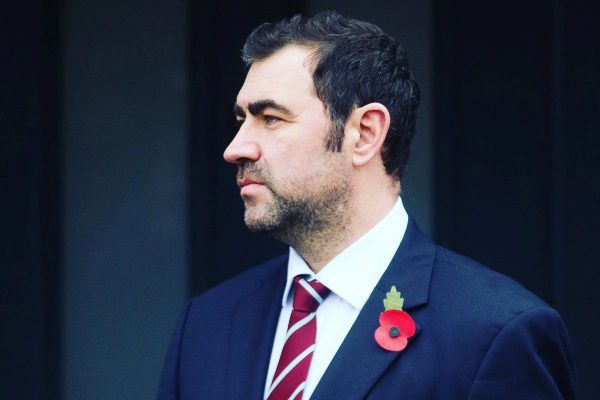
2019
Afghan War Hero Andy Reid MBE joins the Cannington Shaw Preservation Trust CIC as their President.
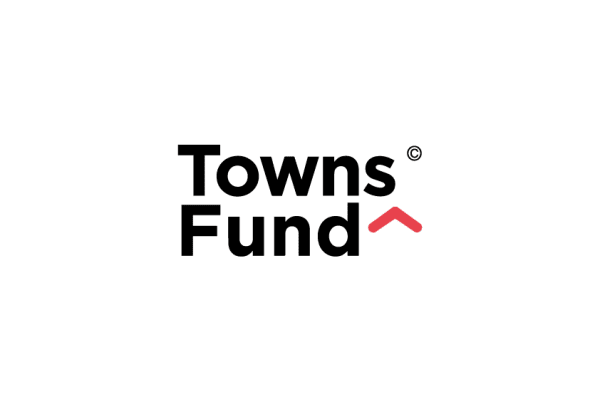
2021
TOWNS FUND
The Chair of the Trust, John F Tabern MSc, in his capacity of Chair of the St Helens Town Deal Board, introduced Cannington Shaw as a project for inclusion in the St Helens Town Investment Plan. This plan was put forward to Government and was successful in 2021, by being awarded £25 million. The following Business Case for the No: 7 Bottle Shop was approved by Government and awarded £1.3 million from the £25 million to carry out Phase One of the plans for Cannington Shaw, that of stabilisation, repair and preservation of what remains.
With final plans and preparations being completed, these works are due to be underway in October 2023.
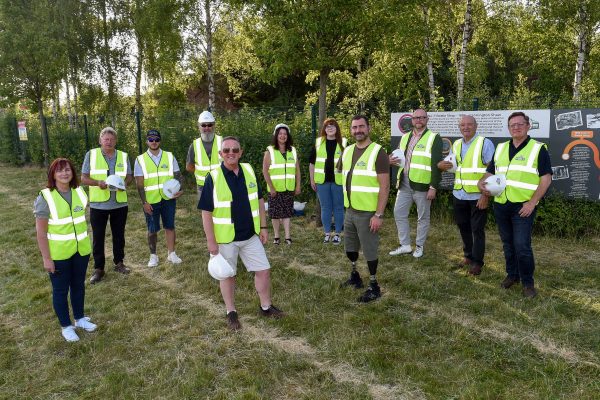
2023
MILESTONE MOMENT
In June 2023 we finally got the No: 7 Bottle Shop into the ownership of the Cannington Shaw Preservation Trust CIC (pictured opposite). This had been a long process of negotiation over the course of many months. This development is a quantum leap for our organisation, putting us in charge of our own, and more importantly, the Bottle Shops future.
Being the custodians of the site means we are now well placed to access further match funding streams to give us the ability to move forward with future plans. Realising a vision to place the No: 7 Bottle Shop back at the heart of innovation and the community.
The No.7 Bottle Shop will have a new lease of life. Together with St Helens Borough Council, Historic England and the people of our town, the Cannington Shaw Preservation Trust CIC is about to start the regeneration and repurposing of our heritage.

